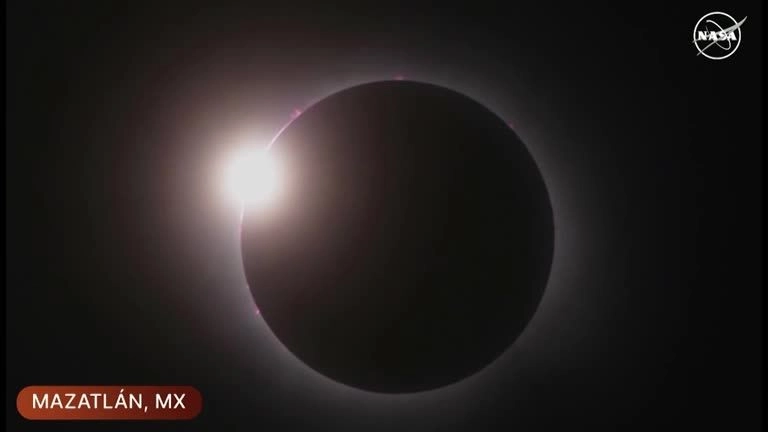On April 8, 2024, a total solar eclipse will cross North America, passing over Mexico, the United States, and Canada. When watching a total solar eclipse, safety is the number one priority. NASA has given recommendations on how to observe this astronomical phenomenon, UNN reports.
Except during the brief total phase of a total solar eclipse, when the Moon completely covers the Sun's bright disk, it is dangerous to look directly at the Sun without special eye protection. Viewing any part of the bright Sun through a camera lens, binoculars, or telescope without a special solar filter attached to the front of the optics will instantly cause serious eye injury.
Details
A total solar eclipse occurs when the Moon passes between the Sun and the Earth, completely covering the face of the Sun. The sky will darken, like dawn or dusk.
NASA has provided a list of recommendations and guidelines for safe viewing of the total solar eclipse:
- Watch the Sun through eclipse glasses or a portable solar viewing device during partial eclipse phases before and after a total eclipse.
- You can only view an eclipse without proper eye protection when the Moon completely covers the Sun's bright face - during the brief and spectacular period known as totality. (You'll know it's safe when you can no longer see any part of the Sun through your eclipse glasses or solar eyepiece.)
- As soon as you see even a little bit of the bright Sun reappear after totality, immediately put on your eclipse glasses or use a portable solar viewer to look at the Sun.
- You should also take care to protect your skin. If you are watching the eclipse in its entirety, you may be exposed to direct sunlight for hours. Remember to wear sunscreen, a hat, and protective clothing to prevent skin damage.
The astronomers also reminded that it is impossible to observe the phenomenon through a camera lens unless it is equipped with a special filter. They noted that the special Eclipse glasses are NOT ordinary sunglasses; ordinary sunglasses, no matter how dark, are not safe for observing the sun. NASA has noted that while they do not recommend or advertise any particular brand of solar observers, they do ask that you check safe solar viewing devices for compliance with the international standard ISO 12312-2. And to look through such glasses/filters.
Optional
And for those who are unable to observe the phenomenon in their hemisphere, NASA is live-streaming the eclipse starting at 1:00 p.m. EDT. The agency is covering the eclipse live from across North America, with special appearances by NASA experts, astronauts aboard the space station, and an inside look at NASA's eclipse science experiments and parties across the country.
This NASA broadcast will last three hours and show live locations from across the country, including the agency's only center on the path of totality, NASA's Glenn Research Center in Ohio.
Another NASA broadcast without commentary only through the telescope is available on the NASA Television media channel and YouTube .
NASA's interactive Eclipse Explorer Map allows you to watch the solar eclipse move across North America on April 8 in real time.
It will also provide information on real-time weather updates, percentage of eclipse coverage, and even a corona forecast for locations on the path to totality.
For reference
The solar eclipse on Monday, April 8, briefly plunged the northern region of Mexico into absolute darkness. Locals and tourists watched the event through special glasses and filters.
This astronomical phenomenon spread from Mexico to Texas and 14 other US states, and culminated in Quebec and four additional Canadian provinces.
It is noted that the eclipse first appeared in Mazatlan.
